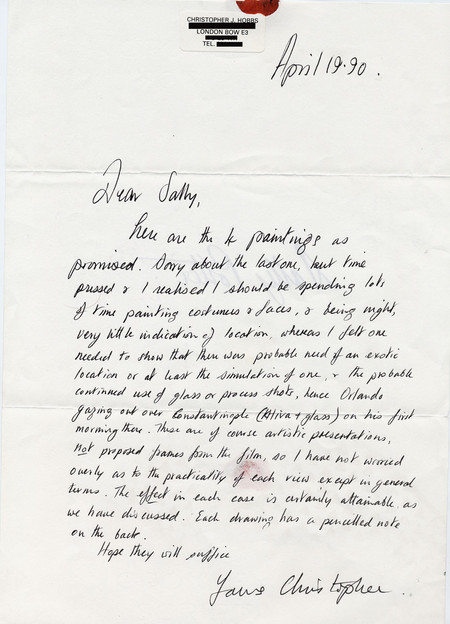

Translating the novel to the screen. What is lost? What is gained? Singular author vs creation by committee?
Items that had anything to do with scene 2
Intertextuality in Orlando
An exploration into the ways in which Woolf and Potter construct their versions of Orlando and how these show similar motives as authors, or perhaps how these motives might differ, possibly due to the fact that they use different mediums to tell the same story.
Creating your own online ‘pathway’, use the SP-ARK multi-media archive to reflect upon and illustrate the intertextual nature of Orlando (1928 and 1992).
a look into the production design and the obvious themes of gender vs identity and the need to conform to society.
Exploring intertextuality in Sally Potter's 'Orlando' (1992)
Looking at Sally Potter\'s film version of Virginia Woolf\'s novel, \'Orlando,\' specifically regarding it\'s intertextual nature. When Tilda Swinton and Sally Potter were being interviewed at the BFI, they both talked about how passionate they were about creating Orlando the film, and they hoped that they could replicate the way the novel made them feel and succesfully represent this on film. As discussed in a seminar, one person's 'feelings' about a novel can vastly differentiate from another's (usually hindering the audience's enjoyment because they did not feel the same), so, when translating a medium from novel to film, which idea will resonate with all? Potter has chosen the ideas 'death' and 're-birth.' What is also interesting, is that a screenwriter will usually begin a script perhaps not totally aware of their controlling idea. Therefore, is the key to succesfully adapting a novel to film finding the 'controlling idea' of a novel and reproducing it cinematically?
in my pathway i will be looking at the intertexuality between Virginia Woolf's 1928 novel and Sally Potter's 1992 flm Adaptation.
The Living Archive The great joy of archives is the way that they allow you to see behind the facade, to bring alive the thinking that resulted in the documents. For this reason, I find notes such as this irresistible. In their immediacy, they help you get into the mind of the artist more than the work itself. The finished painting, book or film is as much a process of hiding as revealing. But if you come across notes such as these in an archive, then you begin to get that wonderful sense of being able to see all.
This pathway is interested in role of the East in Orlando's journey
Copyright ©2025 Adventure Pictures. Some rights reserved. Non-commercial use of text and images in which Adventure Pictures holds the copyright is permitted, with attribution, under the terms and conditions of a Creative Commons BY-NC-ND License.